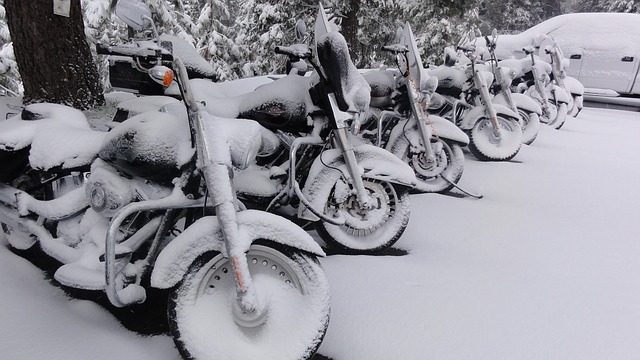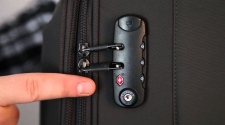Driving in extreme weather conditions dramatically increases the probability for someone to endure an accident. And with the ‘frosty fists’ of winter knocking on Mother Nature’s footsteps, automobilists should be harnessed with the proficiency to fully understand driver-safety guidelines, while maintain competency to adjust their thinking when weather conditions modify or progress in severity.
Regarding motorcyclists, driving in less than ideal weather conditions only intensifies the threat of danger, which mandates further study into driver safety and preparation.
With the common reputation of motorcyclists as badass, rough and tough, road-demons, unmoved by the stench of danger and unyielding to the menace of blisteringly cool temperatures—it is no surprise as to why the winter season promises to be a roaring, two-wheeled, jolly good time of snowy adventure.
Youthful or practiced, masculine or feminine—there is no demographic in the motorcycle community better suited than the other to handle conditions that occur during the months of winter.
So, whether you’re sliding on your sleekly customized moto jeans womens apparel or buttoning up your handsomely fitted riding jeans, it’s imperative to invest a few moments of your time and assess how to properly prepare your mind, body and motorcycle for the elements that a sure to come.
1. Don’t just Bundle up; Embrace it!
Colder temperatures promote discomfort while riding on your wintery moto- excursion. With that in mind, layering your clothing will most likely be you’re most effective and cheapest alternative to not suffer from body numbness due to high winds of cold air temperature.
There is no reason why layering clothing should be confusing. From cozy turtlenecks to tightly sealed helmets with cotton-linings embedded–auto retailers (corporate and private) offer catalogs of selections of clothing attuned to promoting comfortable riding during the winter season.
2. Make it a Focus to Increase the Temperature of your Tires
It’s basic science: the colder an object is, the denser that object becomes.
The same elementary principle applies to tires; as the more time your wheels remain stagnate during an interval of no-motion, those tires become susceptible to cooling, which damages traction while increases the threat of skidding.
To avoid this potentially harmful situation, treat your tires as you would treat your body before a strenuous work out. Just like your muscles, tendons and joints—tires also need to lubricated via heat-promoting strategies such as and accelerating and decelerate quickly (for only a few seconds) in a vacant, unobstructed, road-accessible area.
Be sure to also check (and religiously check) tire pressure each day, as blisteringly cold conditions affect optical traction.
3. Don’t be the Hero
As the snow begins to gently scathe the roads while the fog swiftly accumulates into a densely transparent cloud of no visibility, it’s time to pull over and retrieve to plan; virtually any plan that keeps your butt of the seat of your bike is a plan worth exploring.
Sure, the thunderous sounds of the motorcycle couple with the echoing the vibrations of the throttle amidst a wonderland of white seems like it would be a life altering experience; however, there is also no better experience in the world than experiencing the feeling of being alive—so, when uncertainty or fear arise, step away from the wheel.















